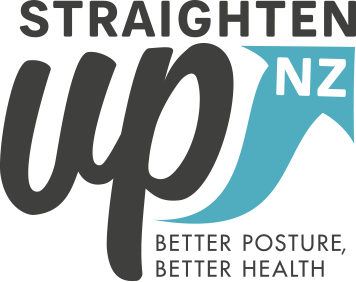
Good Posture
Posture ranks right up at the top of the list when you are talking about good health. It is as important as eating healthy, exercising and getting a good night’s sleep. Good posture allows you to move through life with more energy, less stress and fatigue. Without good posture, it is more difficult to be at your physical optimum.
The importance of good posture in an overall health regimen is often overlooked. The good news is that most everyone can avoid the problems caused by bad posture, and you can make improvements at any age.

Good Posture for Good Health
Without good posture, your overall health and total efficiency may be compromised.
Because the long-term effects of poor posture can affect bodily systems – such as digestion, breathing, muscles, joints and ligaments – a person who has poor posture may often be tired or unable to work efficiently or move properly.
Even for younger people, how you carry yourself when working, relaxing or playing can have a huge impact on your posture and overall wellness.
How can poor posture happen?
Often, poor posture develops because of accidents or falls. But bad posture can also develop from environmental factors or bad habits.
Today, posture-related problems are increasing:
- As we become a society that watches more television than any previous generation;
- As we become a more electronic society, with more and more people working at desk jobs or sitting in front of computer terminals;
- As more and more cars are crowding our roads, resulting in accidents and injuries;
In most cases, poor posture results from a combination of several factors, which can include:
- Accidents, injuries and falls
- Poor sleep support, mattress
- Excessive weight
- Visual or emotional difficulties
- Foot problems or improper shoes
- Weak muscles, muscle imbalance
- Careless sitting, standing, sleeping habits
- Negative self image
- Occupational stress
- Poorly designed work space
What does poor posture feel like?
A lifetime of poor posture can start a progression of symptoms in the average adult. It can start with…
Fatigue – your muscles have to work hard just to hold you up if you have poor posture. You waste energy just moving, leaving you without the extra energy you need to feel good.
Tight, achy muscles in the neck, back, arms and legs – by this stage, there may be a change in your muscles and ligaments and you may have a stiff, tight painful feeling. More than 80% of the neck and back problems are the result of tight, achy muscles brought on by years of bad posture.
Joint stiffness and pain – at risk for “wear and tear” arthritis, or what is termed degenerative osteoarthritis. Poor posture and limited mobility increase the likelihood of this condition in later years.
Improving your posture
When standing – hold your head high, chin firmly forward, shoulders back, chest out, and stomach tucked in to increase your balance. If you stand all day in a job like a cashier or clerk, rest one foot on a stool or take breaks to get off your feet for a while.
When sitting – use a chair with firm low back support. Keep desk or table top elbow high, adjust the chair or use a footrest to keep pressure off the back of the legs, and keep your knees a little higher than your hips. Get up and stretch frequently–every hour if you sit for long periods of time. Do not sit on a fat wallet; it can cause hip imbalance!
When working on a computer – take a one or two minute task break every 20 minutes when you work at a computer screen. Keep the screen 15 degrees below eye level. Place reference materials on a copy stand even with and close to the terminal.
When sitting in the car – adjust the seat forward so your knees are higher than your hips. Put a small pillow or cushion in the small of your back.
When sleeping – sleep on your side with your knees bent and head supported by a pillow, to make your head level with your spine. Or, sleep on your back, avoiding thick pillows under your head. Use a small pillow under your neck instead. Don’t sleep on your stomach.
When lifting – let your legs do the work in order to prevent injury to your low back. Stand close to the object, then where possible squat down and straddle it. Grasp the object, and slowly lift the load by straightening your legs as you stand up. Carry the object close to your body.
When bending – never twist from the waist and bend forward at the same time. To lift or reach something on the floor, bend the knees while keeping the back straight.
If you follow these practices, but still feel discomfort and pain related to specific activities, visit your Doctor of Chiropractic periodically for spinal check-ups and for a postural evaluation for yourself and for your children.


